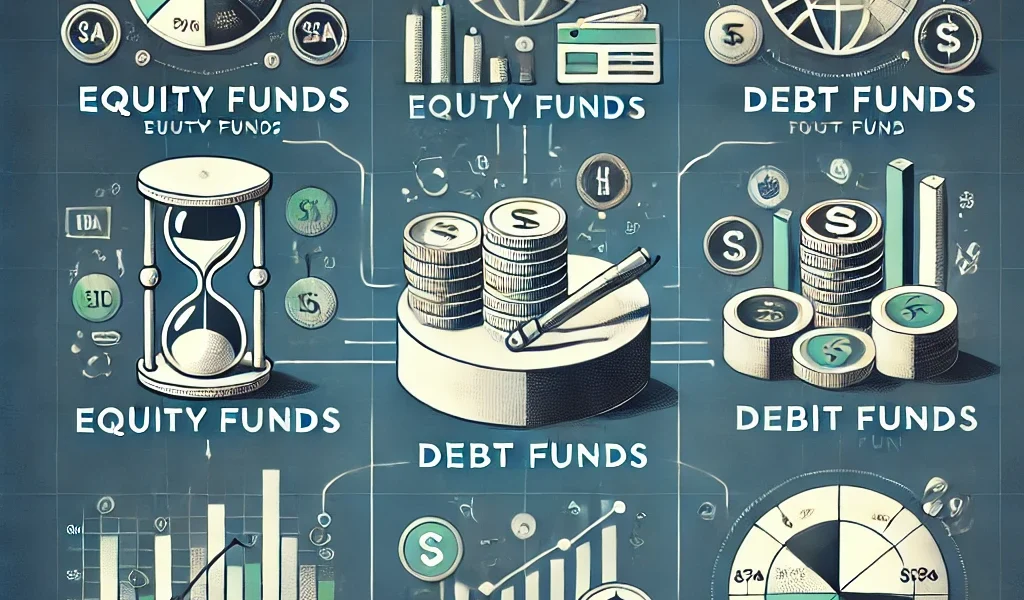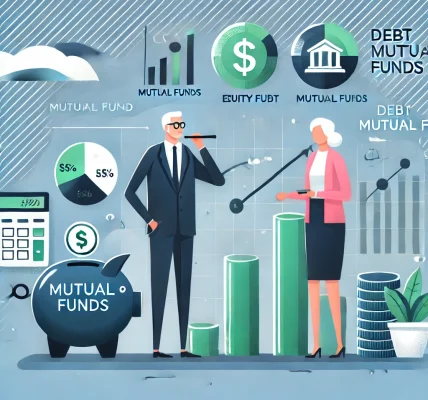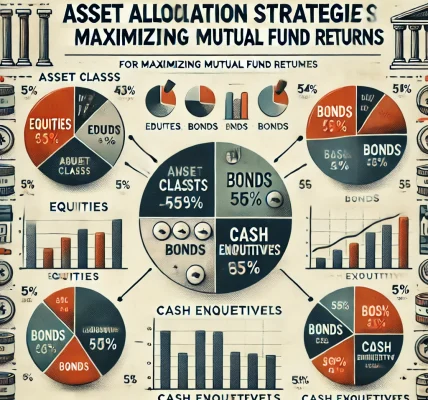Introduction
Investing in mutual funds is one of the most effective ways to achieve financial goals, offering a blend of risk management, professional fund management, and portfolio diversification. However, with numerous types of mutual funds available, selecting the right one can be overwhelming. This guide will help you understand the various mutual fund categories, their benefits, and how to choose the right one based on your financial objectives and risk tolerance.
What Are Mutual Funds?
A mutual fund is a professionally managed investment scheme that pools money from multiple investors to invest in a diversified portfolio of stocks, bonds, or other securities. Investors earn returns based on the fund’s performance, and the risk varies depending on the asset allocation and investment strategy.
Types of Mutual Funds
Mutual funds are categorized based on structure, asset class, investment objective, and risk level. Below are the primary types of mutual funds:
1. Based on Structure
a) Open-Ended Funds
- Investors can buy or sell fund units at any time.
- No restriction on entry or exit.
- Highly liquid and suitable for long-term investments.
b) Close-Ended Funds
- Have a fixed maturity period, typically ranging from 3 to 10 years.
- Units can only be bought during the initial offer period and later traded on stock exchanges.
- Less liquidity but can offer stable returns.
c) Interval Funds
- A mix of open-ended and close-ended funds.
- Investors can buy or sell units only at specified intervals.
- Suitable for investors looking for moderate liquidity.
2. Based on Asset Class
a) Equity Funds
- Invest primarily in stocks.
- High risk, but offer higher returns over the long term.
- Best suited for aggressive investors with a long-term horizon.
- Subtypes:
- Large-Cap Funds: Invest in stable, well-established companies.
- Mid-Cap Funds: Invest in medium-sized companies with high growth potential.
- Small-Cap Funds: Invest in smaller, emerging companies with high-risk potential.
- Sectoral Funds: Invest in specific sectors like IT, healthcare, or energy.
- Thematic Funds: Invest in broader themes such as ESG (Environmental, Social, Governance) or emerging technologies.
b) Debt Funds
- Invest in fixed-income securities like government bonds, corporate bonds, and treasury bills.
- Lower risk compared to equity funds.
- Suitable for conservative investors looking for stable returns.
- Subtypes:
- Liquid Funds: Invest in short-term instruments; highly liquid.
- Short-Term Funds: Invest in bonds with a short maturity period.
- Gilt Funds: Invest in government securities; minimal risk.
- Corporate Bond Funds: Invest in high-rated corporate bonds.
c) Hybrid Funds
- Invest in a mix of equity and debt.
- Balanced risk and return potential.
- Ideal for moderate-risk investors.
- Subtypes:
- Aggressive Hybrid Funds: Higher equity exposure.
- Conservative Hybrid Funds: Higher debt exposure.
- Dynamic Asset Allocation Funds: Adjust the ratio of equity and debt based on market conditions.
d) Money Market Funds
- Invest in short-term debt instruments like treasury bills and certificates of deposit.
- Low risk, suitable for parking surplus cash.
- Highly liquid, offering quick access to funds.
3. Based on Investment Objective
a) Growth Funds
- Aim for capital appreciation.
- Invest in equity or equity-oriented instruments.
- Suitable for investors with a long-term horizon.
b) Income Funds
- Focus on generating regular income.
- Invest in debt instruments.
- Suitable for retirees and risk-averse investors.
c) Tax-Saving Funds (ELSS)
- Offer tax benefits under Section 80C of the Income Tax Act.
- Have a mandatory lock-in period of 3 years.
- Provide long-term wealth creation opportunities.
d) Index Funds
- Replicate the performance of a market index (e.g., Nifty 50, Sensex).
- Lower management fees.
- Ideal for passive investors who want to follow market trends.
e) International Funds
- Invest in foreign markets.
- Provide global diversification opportunities.
- Higher risk due to currency fluctuations and geopolitical factors.
4. Based on Risk Appetite
a) High-Risk Funds
- Equity funds, sectoral/thematic funds, and small-cap funds fall under this category.
- Suitable for aggressive investors with high-risk tolerance.
b) Moderate-Risk Funds
- Hybrid funds and balanced funds provide stability with moderate risk.
- Ideal for investors looking for growth with controlled volatility.
c) Low-Risk Funds
- Debt funds, liquid funds, and money market funds offer stability and capital protection.
- Best suited for conservative investors and retirees.
How to Choose the Right Mutual Fund
1. Define Your Investment Goals
- Are you investing for wealth creation, retirement, tax-saving, or regular income?
- Choose funds that align with your financial objectives.
2. Assess Your Risk Tolerance
- High-risk investors should consider equity funds.
- Moderate-risk investors can opt for hybrid funds.
- Low-risk investors should focus on debt funds.
3. Consider Investment Horizon
- Short-term goals (1-3 years): Debt funds or liquid funds.
- Medium-term goals (3-5 years): Hybrid funds.
- Long-term goals (5+ years): Equity funds.
4. Analyze Fund Performance
- Check historical returns, but remember past performance does not guarantee future returns.
- Compare funds within the same category.
- Evaluate expense ratio, fund manager expertise, and investment strategy.
5. Look at Tax Implications
- Equity funds held for more than 1 year attract Long-Term Capital Gains (LTCG) Tax.
- Debt funds held for over 3 years are subject to indexation benefits.
- ELSS funds offer tax deductions under Section 80C.
Conclusion
Choosing the right mutual fund depends on your financial goals, risk appetite, and investment horizon. Whether you seek capital appreciation, regular income, or tax-saving options, there is a mutual fund suited to your needs. Always conduct thorough research, consult financial experts if needed, and regularly monitor your investments to ensure they align with your financial objectives. By making informed decisions, you can maximize returns while effectively managing risks in your investment journey.




